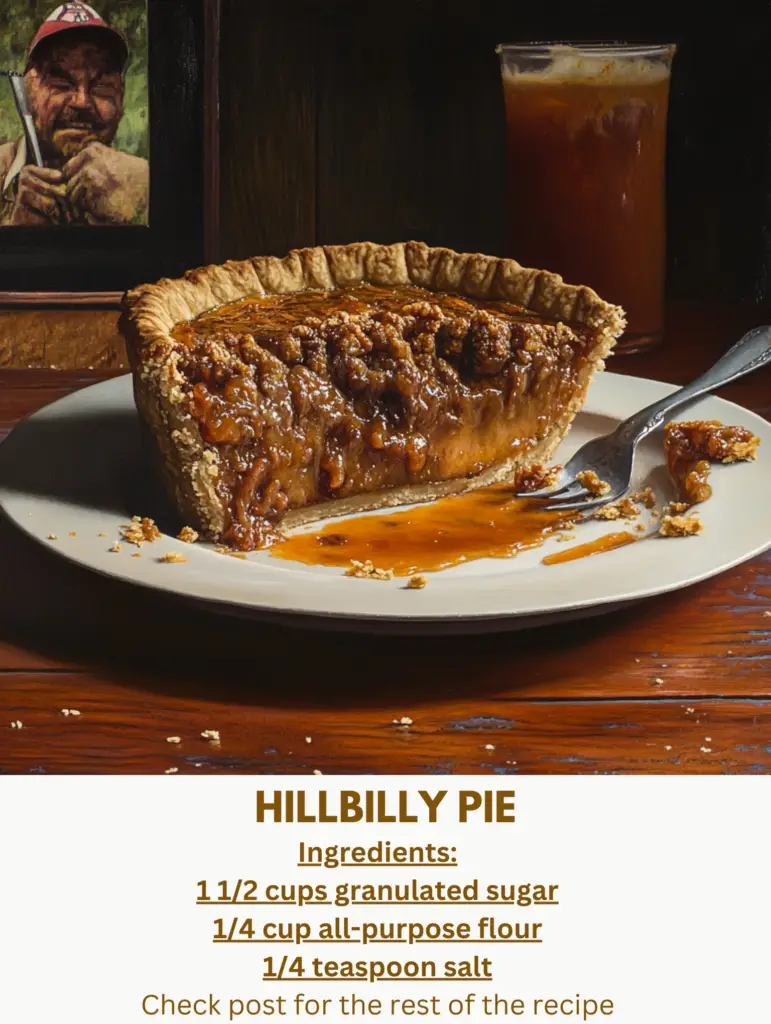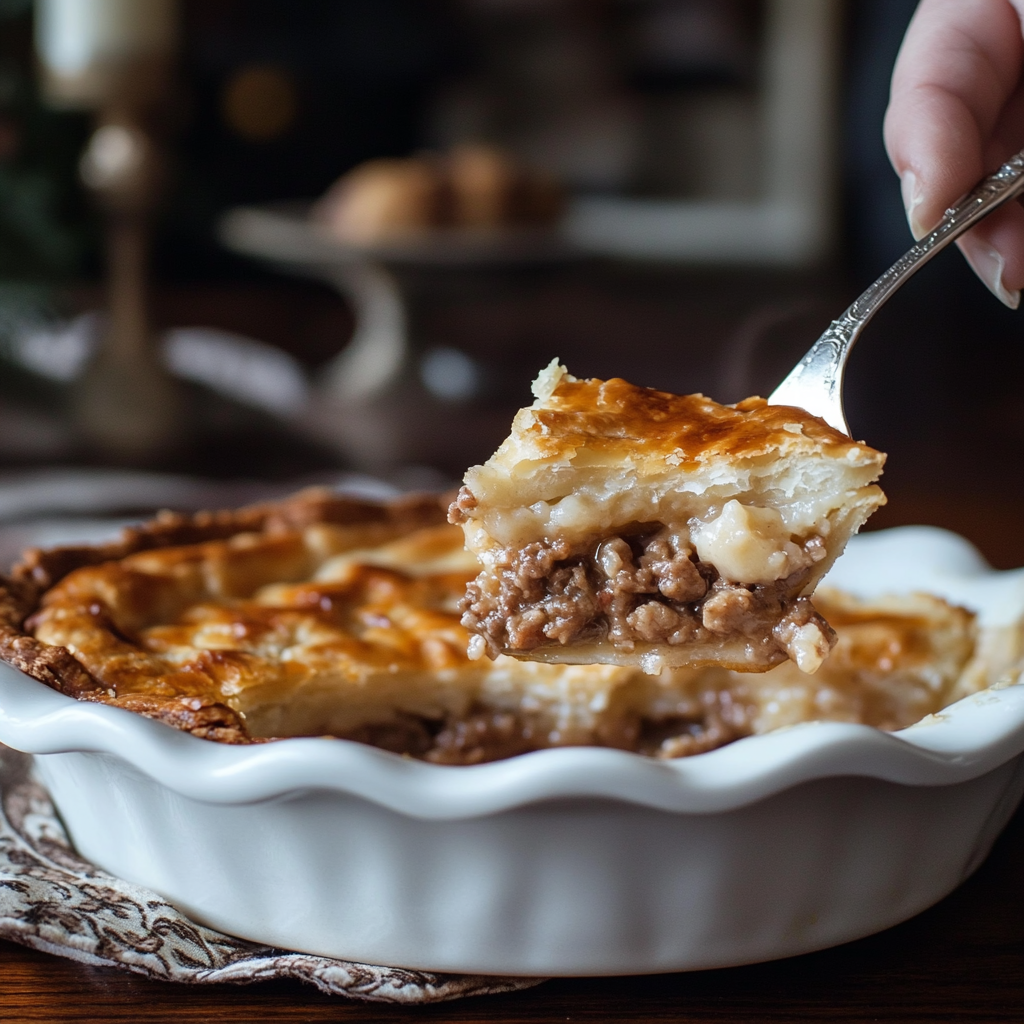Discover the rich history and delicious flavors of Hillbilly Pie, a rustic dessert perfect for any occasion.
Introduction: Why Hillbilly Pie Deserves a Place in Your Kitchen
Hillbilly Pie is a nostalgic dessert that encapsulates the essence of simple, hearty American cooking. Known for its rustic appeal, this pie combines accessible ingredients with a rich, comforting flavor. Whether you grew up enjoying this classic treat or are discovering it for the first time, Hillbilly Pie is a dessert worth adding to your recipe collection. In this guide, we’ll explore its origins, ingredients, preparation tips, and much more.

What Is Hillbilly Pie?
Hillbilly Pie is a traditional dessert rooted in rural America, celebrated for its no-fuss preparation and satisfying taste. Made with simple pantry staples, its charm lies in its adaptability. This pie often features a buttery crust filled with a mixture of sweetened custard or fruit, offering a balance of textures and flavors. Its humble ingredients and comforting taste make it a family favorite across generations.
The Origins of Hillbilly Pie
The history of Hillbilly Pie is as rich as its flavor. This dessert traces its roots back to Appalachian communities, where families created recipes using readily available ingredients. The term “hillbilly” originally referred to rural mountain folks who thrived on resourcefulness and simplicity. Hillbilly Pie embodies these values, transforming basic ingredients into something truly special.
Historically, pies were a staple in American kitchens. Early settlers adapted European recipes, incorporating local ingredients to create unique variations. Over time, Hillbilly Pie became a symbol of frugality and ingenuity, cherished for its ability to bring people together around the table.
Seasonal and Cultural Relevance of Hillbilly Pie
Best Season for Hillbilly Pie
Hillbilly Pie is versatile enough to be enjoyed year-round. However, its ingredients often align with seasonal availability. For example:
- Spring and Summer: Perfect for showcasing fresh fruits like berries or peaches.
- Fall: Ideal for warm, spiced fillings featuring ingredients like pumpkin or apple.
- Winter: A comforting choice with creamy custard or nut-based fillings.
Cultural Significance
This pie has deep ties to Appalachian culture and beyond. It’s often served at community gatherings, church potlucks, and family reunions, symbolizing unity and tradition. Its simplicity makes it a staple for celebrations and everyday meals alike.
Key Ingredients and Their Significance
Core Ingredients
- Flour: Forms the base of the buttery, flaky crust.
- Butter or Margarine: Adds richness and flavor.
- Sugar: Sweetens the filling, balancing tart or creamy elements.
- Eggs: Provide structure and richness to custard fillings.
- Milk or Cream: Ensures a smooth, luscious texture.
- Optional Add-Ins: Fruits, nuts, or spices for variation.
Ingredient Substitutions
- Use dairy-free alternatives like coconut milk or plant-based butter for a vegan-friendly pie.
- Swap refined sugar with honey, maple syrup, or a sugar substitute to reduce sweetness.
- Experiment with gluten-free flour blends for dietary restrictions.
Nutritional Breakdown
A slice of traditional Hillbilly Pie provides:
- Calories: ~250-300 (depending on filling)
- Fat: ~15g
- Carbohydrates: ~30g
- Protein: ~4g
Step-by-Step Preparation Guide
Tools You’ll Need:
- Mixing bowls
- Rolling pin
- Pie dish
- Whisk
- Pastry cutter
Instructions:
- Prepare the Crust: Combine flour and butter in a bowl. Mix until crumbly, then add water to form a dough. Roll out and place in a pie dish.
- Create the Filling: In a separate bowl, whisk together eggs, sugar, milk, and desired flavorings or add-ins.
- Assemble the Pie: Pour the filling into the crust. Smooth the top with a spatula.
- Bake: Preheat the oven to 375°F. Bake for 35-40 minutes, or until the filling is set and the crust is golden brown.
- Cool and Serve: Allow the pie to cool before slicing. Serve as-is or with a dollop of whipped cream.
Variations and Alternatives
Popular Variations
- Fruit-Filled Hillbilly Pie: Use fresh or canned peaches, cherries, or berries.
- Nutty Delight: Add pecans or walnuts for crunch and depth.
- Spiced Custard: Incorporate cinnamon, nutmeg, or ginger for a warm flavor profile.
Creative Twists
- Experiment with unique fillings like coconut cream or chocolate custard.
- Create mini Hillbilly Pies in muffin tins for individual servings.
Pairings and Accompaniments
Hillbilly Pie pairs wonderfully with:
- Beverages: Hot coffee, herbal tea, or chilled milk.
- Sides: A scoop of vanilla ice cream or fresh fruit salad.
Health and Wellness Aspects
Nutritional Benefits
- Eggs: High in protein and essential vitamins.
- Fruits: Provide antioxidants and natural sweetness.
- Dairy: A source of calcium and healthy fats.
Dietary Adjustments
- Opt for reduced-sugar versions to lower calorie content.
- Use plant-based alternatives for vegan or lactose-intolerant diners.

Frequently Asked Questions (FAQs)
How were the first pies different from the pies we eat today?
Early pies were savory and served as a main course. Sweet pies evolved later as desserts became more popular.
What about pie? What can you learn about the history of this dessert?
Pies originated in ancient Egypt and were later popularized by the Greeks and Romans. Over centuries, they adapted to regional ingredients.
What is the history of water pie?
Water pie is a Depression-era dessert made with minimal ingredients, showcasing ingenuity during tough times.
Why is pie soupy?
A soupy pie often results from underbaking or not letting the filling cool properly.
Suggested Recipes
For more savory recipes you can also check my friend Alicia’s blog here.

